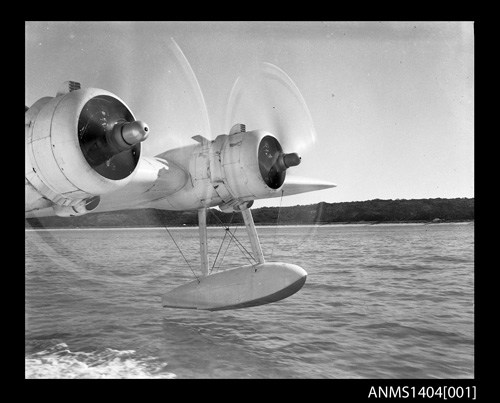
This is something I discovered recently during the process of registering part of the large collection of photographic negatives, taken by photographer Gervaise Purcell, and acquired by the Australian National Maritime Museum.

View of the passenger ship CANBERRA at Circular Quay. ANMM Collection. Reproduced courtesy of Leigh Purcell
|

Example of promotional cruise ship images produced by Purcell. |

Example of promotional cruise ship images produced by Purcell. ANMM Collection. Reproduced courtesy of Leigh Purcell |
The Gervaise Purcell Collection is comprised predominantly of black and white negatives of assorted formats, with some colour negatives and slides too. Registering these objects has meant spending hours each day bent over a light box, looking through a photographic loop, and trying to glean as much information as possible from the negative images to add to object descriptions in our collection database. When looking at images in negative all day, it can really mess with your eyes! Often it’s hard to really get a good sense of what’s going on, the details are harder to distinguish, and lighting and shadows can distort your perspective. After completing the sorting, measuring and other cataloguing details, I was excited to reach the stage in the registration process where I began to scan the negatives and attach the images to the collection database.

Interviewing the crew of Royal Navy submarine HMS ANCHORITE, in Sydney Harbour.
ANMM Collection. Reproduced courtesy of Leigh Purcell

Loading an Australian made television transmitter for export to Singapore.
ANMM Collection. Reproduced courtesy of Leigh Purcell
When using the transparency attachment on a scanner, negatives are transformed into positives, and you can see the actual image that the photographer originally captured – in all its positive detail! It has been an amazing process to have these images revealed to me after spending so long looking at them in negative and attempting only to imagine the way that they would really look, with all their features like textures, lighting, and detailed elements such as faces in particular.
|

Passengers on the jetty at Lord Howe Island, with flying boat Beachcomber in background. ANMM Collection. Reproduced courtesy of Leigh Purcell |

Cargo being loaded onto the ship TAIYUAN. ANMM Collection. Reproduced courtesy of Leigh Purcell |
A particular highlight in the initial batch of negatives I have registered are images Purcell took in connection with the launch of the regular Ansett Airways flying boat service between Rose Bay and Lord Howe Island in the early 1950s. Flying boats were seen as a rather romantic method of transport in this era, and the Lord Howe Island route (which operated right up until 1974) epitomised this sense of romance and adventure, with passengers being transported direct from the city to a remote island paradise.

The wing of a flying boat. ANMM Collection. Reproduced courtesy of Leigh Purcell

Pilots inside the cockpit of a flying boat. ANMM Collection. Reproduced courtesy of Leigh Purcell

A view across the lagoon at Lord Howe Island, looking towards Mount Lidgbird and Mount Gower. ANMM Collection. Reproduced courtesy of Leigh Purcell

The Ansett Airways flying boat Beachcomber VH-BRC, on Sydney Harbour. ANMM Collection. Reproduced courtesy of Leigh Purcell
Purcell also photographed a significant portfolio for the marine department of Amalgamated Wireless Australasia (AWA) which produced marine radios, telephones and other communication/navigation devices, even documenting the testing of an early underwater television camera – as you can see from the images below, its dimensions are a far cry from the small handheld cameras that divers can film with these days!

Testing of an AWA underwater television camera in Sydney Harbour. ANMM Collection. Reproduced courtesy of Leigh Purcell

Testing of an AWA underwater television camera in Sydney Harbour. ANMM Collection. Reproduced courtesy of Leigh Purcell
One thing that has been made clear to me during the process of scanning these negatives is just how talented a photographer Gervaise Purcell was. Seeing the beautiful images he captured of ships in Sydney Harbour at night time and the warm inviting images of people on board cruise ships, even just the product shots of radios, whether in black and white or colour, it has been a wonderfully exciting process – and I haven’t even made it to the box of negatives marked “Swimsuits” yet, where some of his most iconic, fun and striking fashion images are waiting for me!
The registration of this large collection is an ongoing process and records will be added to the online collection, available for searching and viewing, as they are completed.
Tennille Noach
Assistant Registrar – Digitisation
